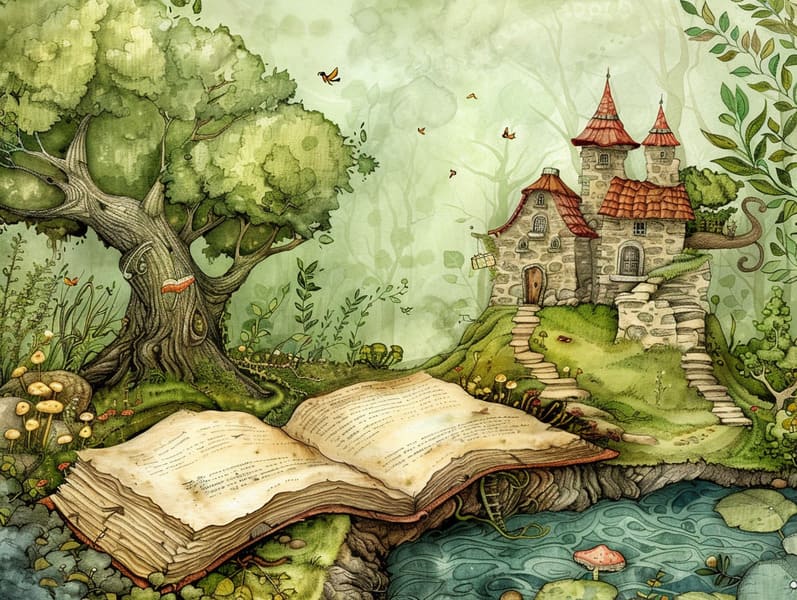Understanding the Legacy of Vintage Fairy Tales with Its Unwavering Grace.
Understanding the Legacy of Vintage Fairy Tales with Its Unwavering Grace.
Blog Article

Grimm's fairy tales have enduring presence. These narratives have been relayed from one generation to the next millennia before they were ever inscribed. They emerged from a variety of traditions, including American traditions. They were initially conveyed among elders, often carrying themes and messages aligned with the societal norms and beliefs of the time.
The famous Grimm duo, the two Grimm brothers, were among the first to collect many of these beloved stories. Their volume, "Grimm's Story Collection," included classics like "The Little Glass Slipper," "The Story of Hansel and Gretel," and "Schneewittchen," which have since become hallmarks in the world of timeless fairy tales. Similarly, the Danish author's enchanting fairy tales, such as "The Mermaid," and "The Ugly Duckling," have won hearts worldwide, guaranteeing their place in the pantheon of treasured fairy tales.
Despite their historical roots, traditional fairy tales remain as relevant as ever, especially as bedtime stories for kids. These whimsical stories are now available in different formats, including vibrantly illustrated books, whimsical animations, and digital storybooks.
Their lasting appeal can be linked to several magical reasons:
Ethical Lessons: Old fairy tales often illustrate important moral lessons. Tales like "The Boy Who Cried Wolf" teach the importance of sincerity, while "The Tortoise and the Hare" underline the traits of steadfastness and modesty. These stories offer children clear distinctions between moral and immoral, building their moral compass in a subtle yet significant way.
Empathy and Awareness: Timeless fairy tales frequently portray protagonists facing tests and troubles, fostering young readers to understand with their struggles and boost their triumphs. For instance, "The Story of Beauty and the Beast" shows us the necessity of valuing inner qualities to see the true essence of a character, fostering kindness and appreciation.
Cultural Comprehension: Many old fairy tales are rooted in the cultural contexts from which they grew. Learning from these fairy tales can provide informative snapshots into different heritages, fostering a sense of world awareness and comprehension.
Inventiveness and Fantasy: The fanciful elements in fairy tales—fairy godmothers—revitalize children’s innovations. These fairy tales move readers to imaginary realms, fostering innovative dreams and a sense of wonder that continues a lifetime.
Old fairy tales are not only charming but also illuminating. They work as entrancing tools in cultivating various cognitive and affective skills in young ones. When classic fairy tales are recited, they strengthen verbal skills by presenting new words and intricate sentence structures. This practice also nurtures listening skills and focus, as the young hang on every word, prepared to see what happens next.
Furthermore, exploring the themes and characters of old fairy tales can advance cognitive skills and logical thinking. Children are shown to recognize patterns, make predictions, and realize cause and effect. These talks also assist the young articulate their thoughts and feelings, cultivating their emotional intelligence.
In today’s online age, the existence of free fairy tales online has made these stories more acquirable than ever. Web-based platforms and software offer large libraries of children's fairy tales that can be viewed or find it here played anytime, anywhere. Fairy tales narrated are particularly well-received, extending an fascinating method for young readers to savor these whimsical stories. Audiobooks and read-aloud videos carry characters and settings to life, often supported by bewitching background sounds and songs that improve the narrative adventure.
The lasting appeal of classic fairy tales lies in their ability to alter to current eras while keeping their central messages. Contemporary retellings of these stories often integrate more varied figures and modern settings, making them meaningful to today’s audience. However, the basic principles of fearlessness, goodness, and even-handedness remain unchanged, continuing to strike a chord with readers of all ages.
Fairy tales also offer a sense of calm and recognition. They confer a well-structured narrative with a plain beginning, middle, and end, often ending with the conclusion of conflicts and the triumph of justice over injustice. This certainty can be relieving for the young, rendering a sense of solidity in an unstable world.
Classic fairy tales continue to allure and teach new generations, maintaining their appeal and significance in modern society. As bedtime stories for kids, they grant access to a perfect blend of enchantment and education, cultivating moral values, empathy, and creativity. The prevalence of online storybooks and the likability of fairy tales read out loud assure that these classic narratives remain acquirable to new generations.
By upholding and telling these fairy tales, we continue to pay tribute to the rich tapestry of narrative artistry and cultural heritage. Whether you are experiencing a colorful picture book, enjoying a online library, or hearing an audiobook, the attraction of traditional fairy tales is always within reach. These fairy tales illustrate of the endless impact of storytelling and its ability to tie us across centuries and lands.
Even if you are reading a gorgeously illustrated book, enjoying a digital library, or listening to an audio story, the fascination of children's fairy tales is always within reach.
These narratives highlight of the perpetual force of stories and its ability to bond us across centuries and lands, forging a link that captivates and teaches alike.